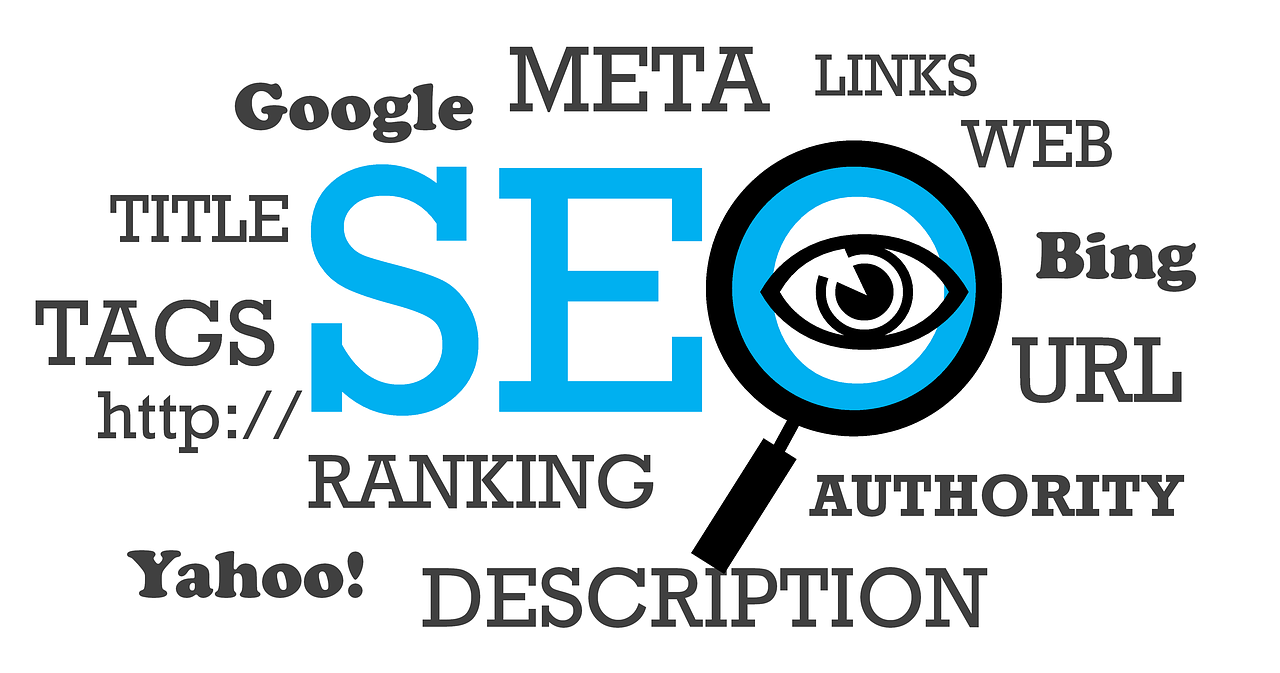This Article has been revised, edited and added to, by Poulomi Chakraborty.
- Understanding B2C vs. B2B Content Strategies
- Keyword Research for B2C Content
- Crafting Engaging and SEO-Friendly Content
- Writing Compelling Titles and Headlines
- Creating an Engaging Introduction
- Structuring Content for Readability
- Using Visual Content
- Providing Value with In-Depth Content
- Implementing Internal and External Links
- Optimizing for Featured Snippets
- Enhancing User Engagement with Interactive Elements
- Creating Strong Calls to Action
- Regularly Updating Content
- Optimizing for Mobile and Voice Search
- Utilizing Social Media for SEO
- Measuring and Analyzing SEO Performance
- Conclusion
In the bustling digital marketplace, creating content that appeals to your B2C (Business-to-Consumer) audience while also satisfying search engine algorithms is crucial. SEO-friendly content is not just about stuffing keywords into your articles; it’s about delivering valuable, engaging, and well-structured information that meets the needs of your audience. This article will guide you through the process of crafting SEO-friendly content that resonates with B2C audiences, boosts your search engine rankings, and drives traffic to your website.
Understanding B2C vs. B2B Content Strategies

Creating content for B2C audiences requires a different approach compared to B2B (Business-to-Business) content. The key lies in understanding the fundamental differences in how these two types of audiences engage with content and make purchasing decisions.
Emotional vs. Rational Decision-Making
B2C content often taps into the emotional aspects of decision-making. Consumers tend to make purchasing decisions based on personal preferences, desires, and immediate needs.
They are influenced by how a product makes them feel, its aesthetic appeal, and the experiences it promises. This means B2C content should be engaging, persuasive, and emotionally resonant.
In contrast, B2B audiences typically make more rational, logic-driven decisions. They focus on the practical benefits of a product or service, such as efficiency, cost savings, and ROI (Return on Investment). B2B content needs to be more informative, data-driven, and detailed, highlighting the practical value of the offering.
Length and Depth of Content
B2C content generally benefits from being concise and to the point. Consumers prefer easily digestible information that quickly answers their questions and helps them make a decision.
This doesn’t mean the content should lack depth; rather, it should be well-structured, visually appealing, and engaging. The use of images, videos, and infographics can enhance the readability and appeal of B2C content.
On the other hand, B2B content often requires more depth and detail. Business buyers expect comprehensive information that thoroughly explains the product’s features, benefits, and use cases. Long-form content such as whitepapers, case studies, and detailed blog posts are effective in addressing the informational needs of B2B audiences.
Content Formats
The formats of content that work best for B2C audiences differ from those suited for B2B audiences. B2C content thrives on visually rich formats such as videos, social media posts, product demos, and user-generated content. These formats capture attention quickly and can be easily consumed on-the-go.
B2B content, however, is typically consumed in more traditional formats like whitepapers, eBooks, webinars, and detailed blog articles. These formats allow for in-depth exploration of topics and provide the detailed information that business decision-makers require.
Keywords and SEO
Keywords play a crucial role in both B2C and B2B SEO, but the types of keywords and their implementation can vary significantly. B2C keywords are often shorter and more focused on specific products or services. They reflect common search queries used by consumers, such as “best smartphone under $500” or “affordable summer dresses.”
B2B keywords, on the other hand, tend to be longer and more technical, targeting industry-specific terms and jargon. Examples include “enterprise resource planning software” or “cloud-based accounting solutions.” B2B SEO often involves optimizing for long-tail keywords that reflect the detailed and specific needs of business buyers.
Understanding these differences is crucial when creating SEO-friendly content for B2C audiences. By focusing on emotional engagement, concise and visually appealing formats, and consumer-oriented keywords, you can craft content that not only ranks well in search engines but also resonates deeply with your target audience.
Keyword Research for B2C Content
Keyword research is the cornerstone of creating SEO-friendly content. For B2C audiences, the goal is to identify keywords that align with consumer search behavior and intent. Effective keyword research helps you understand what your potential customers are searching for and how you can meet their needs through your content.
Understanding Consumer Search Intent
Consumer search intent can be categorized into three main types: informational, navigational, and transactional. Each type of intent reflects different stages of the customer journey, and understanding these can help you create content that caters to each stage.
Informational Intent
Informational searches are conducted by users seeking information or answers to specific questions. These searches often start with words like “how to,” “what is,” or “best ways to.”
For instance, a user might search for “how to choose the right running shoes” or “benefits of organic skincare products.” Creating content that addresses these queries can help attract potential customers at the research stage.
Navigational Intent
Navigational searches occur when users are looking for a specific website or page. These searches often involve brand names or specific product names, such as “Nike running shoes” or “Apple customer support.” Ensuring that your site ranks well for navigational keywords helps guide users directly to your brand.
Transactional Intent
Transactional searches indicate a readiness to purchase. Users with transactional intent search for terms like “buy,” “discount,” “coupon,” or specific product names. Examples include “buy Nike running shoes online” or “best deals on organic skincare products.” Optimizing for transactional keywords helps capture users who are ready to make a purchase.
Tools for Keyword Research
Several tools can assist in keyword research, providing insights into search volume, competition, and related keywords. Tools like Google Keyword Planner, Ahrefs, SEMrush, and Ubersuggest are invaluable for identifying the best keywords for your B2C content.
These tools can help you discover high-volume keywords, long-tail keywords, and trending search terms relevant to your industry.
Long-Tail Keywords
Long-tail keywords are longer, more specific phrases that often have lower search volume but higher conversion rates. They are particularly valuable for B2C content because they capture highly targeted search intent.
For example, instead of targeting a broad keyword like “running shoes,” you might focus on a long-tail keyword like “best running shoes for flat feet.” Long-tail keywords help attract users who are closer to making a purchasing decision.
Analyzing Competitor Keywords
Analyzing the keywords your competitors are ranking for can provide valuable insights into potential keyword opportunities. By using tools like Ahrefs or SEMrush, you can identify which keywords are driving traffic to your competitors’ sites and determine if those keywords are relevant to your content strategy.
This analysis can reveal gaps in your own keyword strategy and help you discover new keywords to target.
Incorporating Keywords Naturally
Once you’ve identified your target keywords, the next step is to incorporate them naturally into your content. Keyword stuffing, or overloading your content with keywords, can harm your SEO and make your content difficult to read.
Instead, focus on creating high-quality, valuable content where keywords are seamlessly integrated. Use keywords in your titles, headings, and throughout the body of your text, ensuring they fit naturally within the context.
Using Semantic Keywords
Semantic keywords are related terms and phrases that provide context to your main keywords. Including semantic keywords helps search engines understand the topic of your content more comprehensively.
For instance, if your main keyword is “organic skincare,” semantic keywords might include “natural beauty products,” “chemical-free skincare,” and “eco-friendly skincare routines.” Using semantic keywords enhances the relevance of your content and can improve your search engine rankings.
Local Keywords for Geo-Targeting
For businesses with physical locations or those targeting specific geographic areas, incorporating local keywords is essential. Local keywords include terms that specify a location, such as “best pizza in New York” or “affordable wedding photographers in Los Angeles.” Using local keywords helps attract customers in your area and improves your visibility in local search results.
Crafting Engaging and SEO-Friendly Content

Creating content that is both engaging for your audience and optimized for search engines is an art. For B2C audiences, the content must capture attention, provide value, and encourage action, all while being structured in a way that search engines can easily understand and rank. Here’s how to achieve this balance.
Writing Compelling Titles and Headlines
The title of your content is the first thing both search engines and users see. It needs to be compelling, informative, and optimized with relevant keywords. A good title should give a clear indication of what the content is about and entice users to click.
For instance, instead of a generic title like “Best Running Shoes,” a more compelling and SEO-friendly title would be “Top 10 Running Shoes for Comfort and Performance in 2024.”
Creating an Engaging Introduction
The introduction of your content should hook the reader and make them want to continue reading. Start with a question, a surprising fact, or a compelling statement that addresses the reader’s needs or interests. The introduction should also incorporate your main keyword naturally to signal to search engines what the content is about.
For example, if you’re writing about organic skincare products, your introduction could start with, “Did you know that 60% of what we put on our skin is absorbed into our bodies? Discover the best organic skincare products to keep your skin healthy and toxin-free.”
Structuring Content for Readability
Readability is crucial for engaging B2C audiences. Use short paragraphs, clear subheadings, and plenty of white space to make your content easy to read and scan.
Subheadings not only break up the text but also help search engines understand the structure of your content. Each subheading should be descriptive and include relevant keywords where appropriate.
Using Visual Content
Visual content, such as images, videos, infographics, and charts, enhances the user experience and makes your content more engaging. High-quality visuals can illustrate points more effectively than text alone and keep readers on your page longer, which can positively impact your SEO.
When using images, make sure to include alt text with relevant keywords to help search engines understand the content of your images.
Providing Value with In-Depth Content
In-depth content that provides real value to your readers is more likely to rank well in search engines and attract backlinks. Aim to cover your topic comprehensively, answering all potential questions your audience might have.
Use a variety of sources to back up your points and include quotes from industry experts if possible. The more valuable and authoritative your content is, the more likely it is to be shared and linked to by others.
Implementing Internal and External Links
Linking to other pages on your site (internal links) and to reputable external sources (external links) can improve your SEO and provide additional value to your readers. Internal links help search engines crawl your site and understand the relationship between different pages.
They also keep readers engaged by guiding them to related content. External links to high-authority sites can enhance your content’s credibility and relevance. For instance, if you mention a study or statistic, link to the original source.
Optimizing for Featured Snippets
Featured snippets are short, concise answers that appear at the top of Google’s search results. Optimizing your content to appear in featured snippets can significantly increase your visibility and drive traffic to your site.
To optimize for featured snippets, identify common questions related to your topic and provide clear, concise answers in your content. Use bullet points, numbered lists, and tables where appropriate, as these formats are often used in featured snippets.
Enhancing User Engagement with Interactive Elements
Interactive elements like quizzes, polls, and calculators can make your content more engaging and encourage users to spend more time on your site. For example, if you sell fitness products, you could include a quiz to help users determine their ideal workout routine or a calculator to estimate their calorie needs.
These elements not only enhance user engagement but also provide additional opportunities for SEO by incorporating relevant keywords and generating user interaction signals.
Creating Strong Calls to Action
A strong call to action (CTA) guides your readers towards the next step you want them to take, whether it’s making a purchase, signing up for a newsletter, or downloading a resource. Your CTA should be clear, compelling, and relevant to the content.
Use action-oriented language and create a sense of urgency to encourage immediate action. For example, “Sign up now for exclusive discounts!” or “Get your free eBook today!”
Regularly Updating Content
SEO is not a one-time effort but an ongoing process. Regularly updating your content ensures it remains relevant and continues to perform well in search engines. Review your content periodically to add new information, update statistics, and improve outdated sections.
Fresh content signals to search engines that your site is active and provides up-to-date information, which can boost your rankings.

Optimizing for Mobile and Voice Search
In the ever-evolving digital landscape, optimizing for mobile and voice search is crucial for reaching B2C audiences. With more users accessing the internet via mobile devices and the growing popularity of voice-activated assistants, your SEO strategy must adapt to these trends to remain effective.
Mobile Optimization
Mobile-First Indexing
Google’s mobile-first indexing means that the mobile version of your website is considered the primary version for indexing and ranking. Ensuring that your site is mobile-friendly is no longer optional; it’s essential.
A responsive design that adjusts seamlessly to different screen sizes is the first step. This ensures that your content looks great and functions well on both desktop and mobile devices.
Page Speed
Mobile users expect fast load times. Slow-loading pages can lead to high bounce rates and negatively impact your SEO. Optimize your website’s performance by compressing images, minifying code, and leveraging browser caching. Tools like Google PageSpeed Insights can provide valuable recommendations for improving your site’s speed.
Simplified Navigation
Simplified navigation is crucial for mobile users who typically browse with smaller screens and limited time. Ensure that your menus are easy to access and that buttons and links are easily tappable. A clean, uncluttered design helps users find what they’re looking for quickly, enhancing their experience and reducing bounce rates.
Optimized Content Layout
Content layout should be optimized for mobile viewing. Use short paragraphs, bullet points, and plenty of white space to make your content easy to read. Large fonts and high-contrast colors improve readability on small screens. Avoid using pop-ups that can be difficult to close on mobile devices, as these can frustrate users and lead to higher bounce rates.
Voice Search Optimization

Understanding Voice Search Behavior
Voice search queries differ from traditional text searches. They are typically longer, more conversational, and often framed as questions. Understanding how people use voice search can help you optimize your content accordingly.
For instance, a text search might be “best Italian restaurants,” whereas a voice search might be “What are the best Italian restaurants near me?”
Long-Tail Keywords and Natural Language
Voice search optimization involves focusing on long-tail keywords and natural language. People speak differently than they type, often using complete sentences and questions. Incorporate these conversational phrases and questions into your content.
For example, instead of targeting “Italian restaurants,” you might target “Where can I find the best Italian restaurants in downtown Chicago?”
Answering Questions Directly
Since many voice searches are question-based, creating content that directly answers common questions can improve your chances of appearing in voice search results. Use H2 and H3 headings to frame these questions and provide clear, concise answers.
This approach not only benefits voice search optimization but also increases the likelihood of your content being featured in Google’s featured snippets.
Local SEO for Voice Search
Voice search often involves local intent, with users looking for information about businesses and services near them. Optimizing for local SEO is crucial for capturing this traffic.
Ensure your business’s name, address, and phone number (NAP) are consistent across all online listings. Create and optimize your Google My Business profile, and encourage satisfied customers to leave positive reviews.
Structured Data Markup
Implementing structured data markup, or schema, helps search engines understand the content of your site better and enhances your chances of appearing in rich snippets and voice search results.
Use schema to mark up important information such as product details, reviews, and business information. This can improve your site’s visibility and click-through rates by providing more detailed information directly in search results.
Creating FAQ Pages
FAQ pages are particularly effective for voice search optimization. They allow you to address common questions directly and concisely, using natural language that matches how users phrase their voice queries.
Organize your FAQ page with clear headings and provide detailed answers. This not only helps with SEO but also enhances the user experience by providing quick and easy access to important information.
Mobile and Voice Search Synergy
Combining mobile and voice search optimization strategies can create a seamless experience for users. As many voice searches are conducted on mobile devices, ensuring your site is optimized for both is crucial.
By focusing on mobile-friendly design, fast load times, and natural language content, you can cater to the needs of modern users and improve your overall SEO performance.
Utilizing Social Media for SEO

Social media platforms are powerful tools for enhancing your SEO strategy. While social media signals are not direct ranking factors, the benefits of using these platforms can indirectly boost your search engine rankings.
Engaging content shared on social media can drive traffic to your website, increase brand visibility, and create opportunities for backlinks. Let’s explore how to effectively utilize social media to support your SEO efforts.
Building a Strong Social Media Presence
Choosing the Right Platforms
Different social media platforms cater to different audiences and types of content. For B2C businesses, platforms like Facebook, Instagram, Pinterest, and Twitter are particularly effective due to their large user bases and visual nature.
Identify where your target audience spends their time and focus your efforts on those platforms. For instance, if you sell fashion products, Instagram and Pinterest might be more beneficial due to their emphasis on visual content.
Consistent Branding and Posting
Consistency in branding and posting is key to building a strong social media presence. Use the same logo, color schemes, and messaging across all platforms to create a cohesive brand image.
Develop a content calendar to ensure you post regularly and keep your audience engaged. Regular posts keep your brand top-of-mind and encourage followers to interact with your content.
Engaging Content
Engaging content is at the heart of social media success. Create a mix of content types, including images, videos, infographics, and text posts, to keep your audience interested.
High-quality visuals are particularly important for B2C audiences, as they capture attention and drive engagement. Use storytelling to connect with your audience emotionally and make your brand more relatable.
Driving Traffic from Social Media to Your Website
Sharing Blog Posts and Articles
One of the most direct ways to drive traffic from social media to your website is by sharing your blog posts and articles. Write compelling captions that tease the content and encourage clicks.
For example, if you’ve written a blog post about “Top 10 Summer Fashion Trends,” your social media post might say, “Discover the hottest fashion trends this summer! Click the link to read more.”
Promoting Products and Offers
Use social media to promote your products and special offers. Share high-quality images and videos of your products, along with detailed descriptions and links to the product pages. Limited-time offers, discounts, and exclusive deals can create a sense of urgency and drive traffic to your site.
Leveraging User-Generated Content
User-generated content (UGC) is a powerful way to build trust and drive traffic. Encourage your customers to share photos and reviews of your products on social media. Repost their content on your own channels, giving credit to the original creators. This not only provides social proof but also creates a community around your brand.
Enhancing SEO with Social Signals
Increasing Engagement and Shares
High engagement on social media, such as likes, comments, and shares, can signal to search engines that your content is valuable and relevant. Encourage your audience to interact with your posts by asking questions, running contests, and creating shareable content.
The more your content is shared, the more visibility it gains, potentially leading to increased traffic and backlinks.
Building Backlinks
Social media can be a powerful tool for building backlinks. When your content is shared and seen by a wider audience, it increases the chances of other websites linking to it.
Influencers and industry leaders who find your content valuable may share it with their followers or link to it from their own websites. Engage with influencers in your niche by sharing their content and building relationships that can lead to collaborative opportunities.
Social Media Profiles in Search Results
Optimizing your social media profiles can also enhance your brand’s visibility in search results. When users search for your brand, your social media profiles are likely to appear alongside your website.
Ensure that your profiles are complete, up-to-date, and include relevant keywords. This not only helps with discoverability but also presents a professional image to potential customers.
Utilizing Hashtags and Keywords
Hashtags and keywords are essential for increasing the visibility of your social media content. Research relevant hashtags that your target audience is using and incorporate them into your posts.
On platforms like Instagram and Twitter, hashtags can significantly increase the reach of your content. Additionally, use relevant keywords in your social media posts and profiles to improve their discoverability in search engines.
Analyzing and Adjusting Your Strategy
Monitoring Analytics
Regularly monitor your social media analytics to understand what content is performing well and what isn’t. Tools like Facebook Insights, Instagram Analytics, and Twitter Analytics provide valuable data on engagement, reach, and audience demographics.
Use this information to adjust your strategy and focus on the types of content that drive the most traffic and engagement.
Adjusting Based on Performance
Based on your analytics, continuously refine your social media strategy. Experiment with different types of content, posting times, and engagement tactics to see what resonates best with your audience.
Stay flexible and be willing to make changes to improve your results. Successful social media strategies are dynamic and adapt to changing trends and audience preferences.
Measuring and Analyzing SEO Performance

Measuring and analyzing SEO performance is crucial to understanding the effectiveness of your strategies and making data-driven decisions. Regularly monitoring key metrics helps you identify areas for improvement, track progress, and optimize your content for better results. Here’s how to effectively measure and analyze your SEO performance.
Setting Clear SEO Goals
Before diving into the metrics, it’s essential to set clear, achievable SEO goals. These goals should align with your overall business objectives and provide a roadmap for your SEO efforts.
Common SEO goals include increasing organic traffic, improving search engine rankings, boosting conversion rates, and enhancing user engagement. Having specific goals in place allows you to measure success more accurately and make informed adjustments to your strategy.
Key Metrics to Track
Organic Traffic
Organic traffic refers to the visitors who arrive at your website through unpaid search results. This is a primary indicator of your SEO performance.
Tools like Google Analytics provide detailed insights into your organic traffic, including the number of visitors, their behavior on your site, and the sources of their visits. Monitoring organic traffic helps you understand how well your content is attracting and retaining visitors.
Keyword Rankings
Tracking your keyword rankings helps you see how well your content is performing in search engine results pages (SERPs). Use tools like Google Search Console, Ahrefs, or SEMrush to monitor the rankings of your target keywords over time.
Pay attention to fluctuations and trends, and adjust your content strategy to maintain or improve your rankings. Higher rankings for relevant keywords typically lead to increased organic traffic and visibility.
Click-Through Rate (CTR)
CTR measures the percentage of users who click on your link after seeing it in the search results. A high CTR indicates that your title and meta description are compelling and relevant to users’ search queries. Google Search Console provides data on the CTR of your pages.
Optimize your titles and meta descriptions to improve CTR, which can positively impact your rankings and drive more traffic to your site.
Bounce Rate and Dwell Time
Bounce rate refers to the percentage of visitors who leave your site after viewing only one page. Dwell time is the amount of time visitors spend on your site before returning to the search results.
Both metrics provide insights into the quality and relevance of your content. A high bounce rate or low dwell time may indicate that your content isn’t meeting user expectations. Use these metrics to identify pages that need improvement and enhance the user experience.
Conversion Rate
Conversion rate measures the percentage of visitors who complete a desired action, such as making a purchase, signing up for a newsletter, or filling out a contact form.
This metric is crucial for understanding the effectiveness of your SEO efforts in driving business outcomes. Google Analytics can track conversion rates and provide insights into which pages or keywords are generating the most conversions. Optimize your content and calls to action to improve conversion rates.
Backlinks
Backlinks are links from other websites that point to your site. They are a significant factor in SEO, as they signal to search engines that your content is valuable and authoritative.
Tools like Ahrefs and Moz can help you monitor your backlink profile, including the number of backlinks, their quality, and the domains linking to you. Aim to build high-quality backlinks from reputable sites to improve your SEO performance.
Page Speed
Page speed is a critical factor for both user experience and SEO. Slow-loading pages can lead to high bounce rates and lower rankings.
Use tools like Google PageSpeed Insights and GTmetrix to measure your site’s loading times and identify areas for improvement. Optimize your images, minify code, and leverage browser caching to enhance page speed.
User Engagement
User engagement metrics, such as average session duration, pages per session, and social shares, provide insights into how users interact with your content. High engagement indicates that your content is valuable and relevant to your audience.
Google Analytics and social media analytics tools can help you track user engagement. Use this data to refine your content strategy and create more engaging, shareable content.
Analyzing and Interpreting Data
Identifying Trends and Patterns
Regularly analyze your SEO data to identify trends and patterns. Look for correlations between different metrics, such as the impact of keyword rankings on organic traffic or the relationship between page speed and bounce rate.
Identifying these patterns can help you understand what’s working and what’s not, allowing you to make informed decisions about your SEO strategy.
Conducting SEO Audits
Perform regular SEO audits to assess the overall health of your website and identify areas for improvement. An SEO audit involves evaluating various aspects of your site, including technical SEO, on-page optimization, content quality, and backlink profile.
Tools like Screaming Frog, Ahrefs, and SEMrush can assist in conducting comprehensive SEO audits. Use the findings to address issues and optimize your site for better performance.
A/B Testing
A/B testing, or split testing, involves comparing two versions of a webpage or piece of content to determine which performs better. This method can help you optimize elements like titles, meta descriptions, calls to action, and content layout.
By testing different variations, you can identify what resonates best with your audience and drives the desired outcomes. Implement the winning variations to improve your SEO performance.
Adjusting Your Strategy
Based on your analysis, continuously adjust your SEO strategy to improve results. This might involve updating content, optimizing for new keywords, enhancing technical SEO, or building more backlinks.
SEO is an ongoing process, and regular adjustments are necessary to stay competitive and achieve your goals. Stay flexible and be willing to experiment with new tactics to see what works best for your site.
Leveraging SEO Tools and Resources
Numerous SEO tools and resources are available to help you measure and analyze your performance. Google Analytics and Google Search Console are essential tools for tracking traffic, keyword rankings, and user behavior.
Third-party tools like Ahrefs, SEMrush, Moz, and Screaming Frog offer advanced features for keyword research, backlink analysis, and technical audits. Utilize these tools to gain deeper insights into your SEO performance and make data-driven decisions.
Reporting and Sharing Results
Regularly reporting and sharing your SEO results with stakeholders can help demonstrate the value of your efforts and secure support for ongoing initiatives. Create detailed reports that highlight key metrics, trends, and achievements.
Use visual aids like charts and graphs to make the data more accessible and engaging. Share insights and recommendations to inform future SEO strategies and ensure alignment with business goals.
Conclusion
Creating SEO-friendly content for B2C audiences involves understanding their unique needs and behaviors, conducting thorough keyword research, crafting engaging and well-structured content, optimizing for mobile and voice search, and leveraging social media. It’s also essential to measure and analyze your SEO performance regularly. By setting clear goals and tracking key metrics such as organic traffic, keyword rankings, CTR, bounce rate, conversion rate, backlinks, page speed, and user engagement, you can identify areas for improvement and make data-driven decisions.
Regular SEO audits, A/B testing, and continuous adjustments to your strategy are necessary to stay competitive in the ever-evolving digital landscape. Embracing these practices will help you create content that not only ranks well in search engines but also resonates deeply with your target audience, driving sustained traffic and business growth.
READ NEXT:
- The Role of Keywords in Medical and Healthcare SEO
- Tech Startup SEO Guide: Navigating Challenges and Opportunities
- Local SEO Basics for Healthcare Providers
- Advanced Link Building Techniques for B2C
- How to Build Backlinks for Healthcare Websites




















Comments are closed.